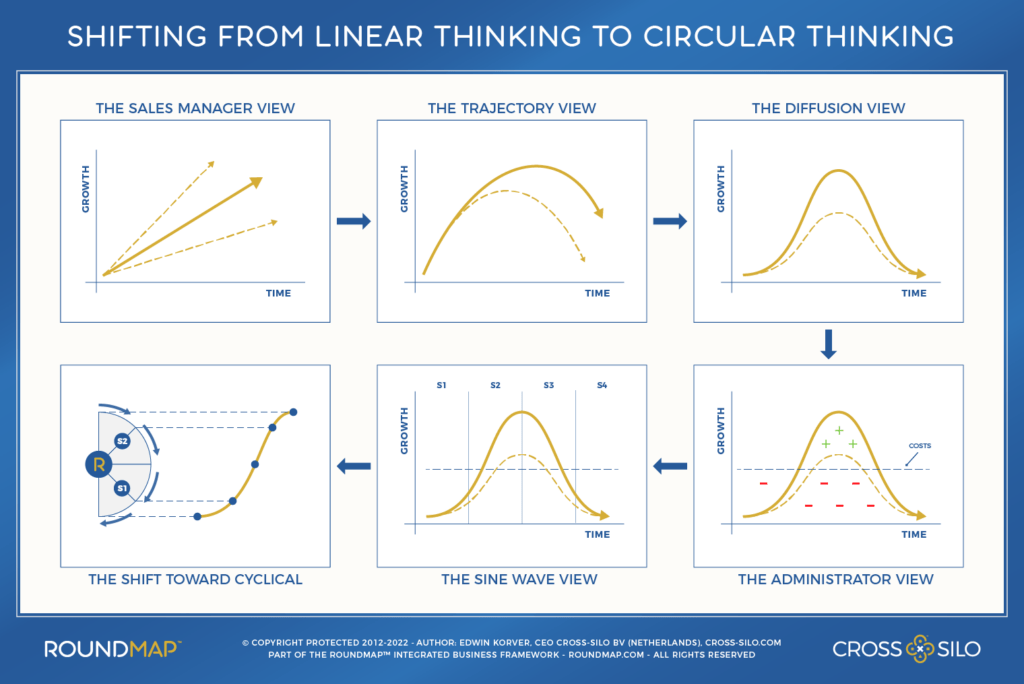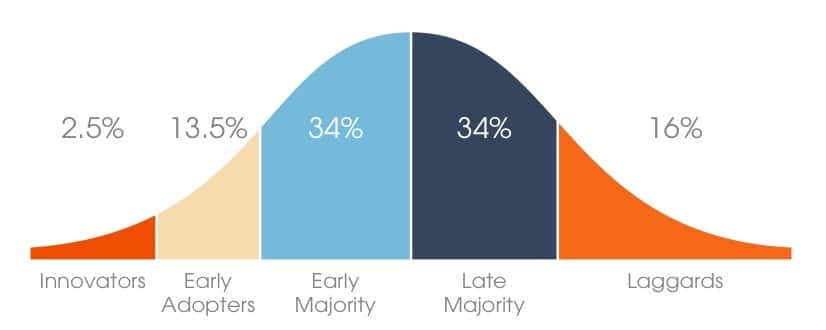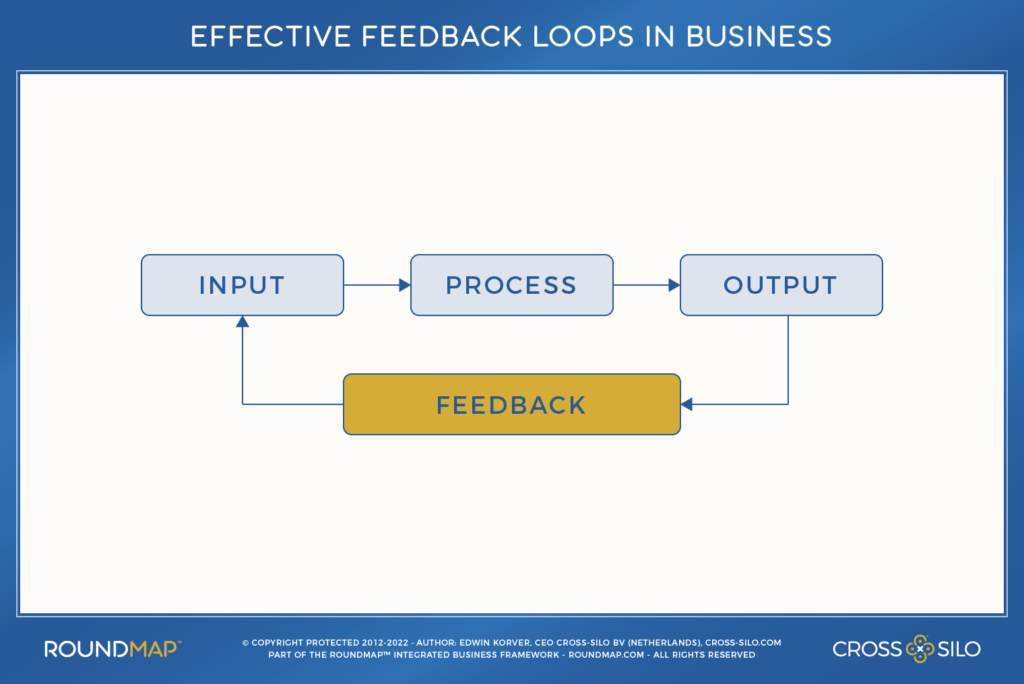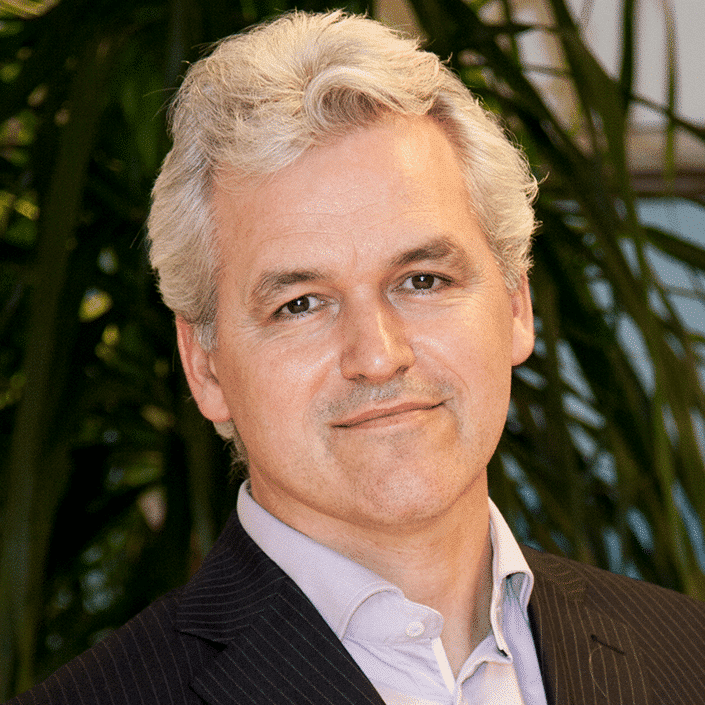We live in a world that accelerates at a pace few of us can cope with. While things change at a breakneck speed, our brains compensate by showing a growing lack of focus. However, our fascination with anything ‘new,’ causing a bombardment of our brains with dopamine, drives our craving for instant gratification. Although these kinds of hyper-short feedback loops have become the norm, this is not the kind of feedback loop needed for sustained growth to occur in business.
But before discussing what kind of feedback loop is needed, or even why we need it, let’s have a look at the following image, beginning with the graph in the top-left corner while following the blue arrows in a clockwise direction:
Graph Explained
Let’s consider each of these six graphs:
- The Sales Manager View: This shows what growth looks like to most sales managers: target-setting has little to do with actual growth; all the more with the level of ambition.
- The Trajectory View: This is another far-fetch from reality: growth isn’t realistic from the start and decline often happens sooner than anticipated.
- The Diffusion View: This is a more realistic perspective: growth takes time, accelerates until it reaches a plateau, then starts to decline; first slowly, then accelerated (Bell Curve).
- The Administrator View: This shows that costs, upfront and ongoing, related to growth leave only a tiny window of opportunity for profit.
- The Sine Wave View: This indicates that the graph mimics a wave pattern that can be divided into segments: two segments of growth (boom) and two segments of decline (bust).
- The Shift Toward Cyclical: Finally, the sine wave pattern comes not from a linear progression but from a circular one: growth is a cyclical process ─ that can be extended like any lifecycle.
Roger's Diffusion of Innovation Curve
A well-known Bell curve or normal distribution is Roger’s Diffusion of Innovation curve:
Rogers explained that:
- Stage 1: Growth typically begins slowly, following a bell curve.
- Stage 2: Once we’ve crossed the well-documented ‘chasm,’ growth will pick up speed until it reaches a plateau.
- Stage 3: After that, growth will decline until it reaches a maturity level.
- Stage 4: Growth can be extended, delaying the demise, but maturity is inevitable.
Is All Growth Finite?
Yes, all growth is limited in time and market space, although standardized products like peanut butter tend to have a much longer lifetime than non-standardized ones.
However, it’s worth noting that while growth may be finite in terms of time and market space, businesses can still maximize their potential by leveraging continuous improvement and innovation. By staying ahead of changing demand, competitive offerings, and emerging solutions, companies can extend their growth trajectory and maintain their relevance in the market.
One way to achieve this is through the utilization of effective feedback loops. By actively seeking and incorporating feedback from customers, employees, and other stakeholders, businesses can gain valuable insights into their performance and identify areas for improvement. This iterative process allows them to fine-tune their strategies, enhance their products or services, and adapt to evolving market dynamics.
Moreover, embracing a culture of innovation and agility is crucial in extending growth. This involves fostering an environment that encourages experimentation, risk-taking, and creativity. By continuously exploring new ideas, technologies, and business models, organizations can uncover untapped opportunities and break through existing limitations to achieve sustainable growth.
It’s important to recognize that while growth may eventually reach its limits, businesses that prioritize adaptation, continuous improvement, and innovation can navigate these limitations and extend their growth trajectory beyond initial expectations. By remaining responsive to changing market conditions and customer needs, companies can position themselves for long-term success and even redefine their industry’s boundaries.
Feedback Loops
There are various feedback loops:
- Sensory feedback is the information or signals our sensory organs (e.g., eyes, ears, skin, taste buds, nose) provide about our environment and body. It includes sensations like sight, sound, touch, taste, smell, body position, and movement awareness. This feedback helps us perceive and understand the world, make adjustments, and respond to stimuli. It plays a vital role in decision-making, performance optimization, adaptation, learning, and making effective choices for our well-being.
- Cognitive feedback involves mental processes and thinking. These feedback loops occur when we receive information or input, process it mentally, and use that processed information to guide our actions or decisions. For example, when we encounter a problem and analyze it to come up with a solution, we are engaging in a cognitive feedback loop.
- Social feedback loops are another type, which involve communication and interaction with others. In social feedback loops, individuals receive input or feedback from others, such as through conversations, discussions, or interpersonal interactions, and use that feedback to adjust their behavior or understanding. This type of feedback loop is often seen in team dynamics, collaborations, and social relationships.
Just as feedback loops are crucial in our personal lives, they also play a vital role in decision-making and performance optimization in the business world:
- HR departments use employee reviews as a feedback loop mechanism to evaluate past performances, identify areas for growth, and create developmental plans.
- Marketing teams rely on focus groups and customer feedback to monitor responses to new products or campaigns, enabling them to make data-driven decisions and refine their strategies.
- Production departments implement quality control measures to ensure the production flow meets the required standards, allowing them to adjust and enhance processes based on feedback.
These feedback loops enable businesses to continuously improve and adapt, ultimately driving sustainable success and growth. This is a simple diagram of the dynamics:
Closing The Loop
- Creating the perception of future value in the customer’s mind expands customer value beyond relevance to establish significance. This shift from a transactional to a relational mindset drives sustainable growth. Building relationships with customers fosters loyalty, repeat business, and positive advocacy. When customers see the long-term benefits and positive impact an organization offers, they become more invested in its success and support its sustainable practices. This relational mindset cultivates trust, collaboration, and shared values, leading to ongoing growth and positive outcomes for all stakeholders.
- Promoting customer success practices and building customer communities contribute to sustainable growth. They capture changes in competitive offerings and customer needs, allowing businesses to fulfill emerging demand before customers are even aware of it. This leads to increased satisfaction, loyalty, and reduced churn rate. Gathering feedback from customers helps improve offerings and align them with their needs. Additionally, building a strong customer community attracts new customers and creates a sense of belonging. Overall, these practices support sustainable growth by fostering customer loyalty and continuously adapting to their evolving requirements.
- Planning for impact and measuring progress are key components of the Impact Model and crucial for achieving sustainable growth. By articulating an intended impact, organizations map out a clear trajectory aligning their operations with their sustainability objectives. This planning extends beyond words, driving companies to take deliberate action toward making a positive difference. Such proactive steps set them apart from their competitors in a tangible way, proving their commitment to truly impactful change.
- Having a clear purpose, separate from the mission, is essential for giving an operation its heart and soul. It provides a sense of identity and meaning, guiding all actions and decisions towards a greater goal. This helps close the loop toward building a sustainable business by aligning priorities and strategies. A strong purpose inspires employees and stakeholders, fostering shared values and driving commitment. It creates fulfillment and a foundation for making a positive and lasting impact on society and the environment.
- Equitably distributing captured value among stakeholders is crucial for sustainable growth. This involves sharing benefits and profits transparently, ensuring everyone feels valued and motivated to contribute. Fair distribution builds trust, fosters collaboration, and creates a supportive ecosystem invested in the organization’s sustainability journey. When stakeholders are treated fairly and receive their fair share, they are more committed, innovative, and advocate for long-term success. Achieving sustainable growth relies on equitable distribution of value among stakeholders.
- A shadow board with diverse stakeholder representation contributes to the equitable distribution of captured value. By providing a platform for different perspectives and interests, it ensures transparency, accountability, and inclusion in decision-making processes related to value distribution. This fosters trust, collaboration, and a shared commitment to the long-term success of the organization. Through active involvement in value distribution discussions, the shadow board helps establish a fair and balanced approach that considers the organization’s sustainability goals over time.
How to Capture Feedback
There are a ton of ways to capture feedback from customers, allowing you to improve your products and services or develop entirely new ones, among which are:
- Customer Interviews
- Customer Surveys
- Customer Support Feedback
- Customer Metrics
- Customer Success Feedback
- Feedback Forums
- Sales Feedback
- Employee Listening/Dialogues
- Social Media Listening
- Churn Surveys
- Card Abandonment Feedback
- Customer Communities
While capturing feedback is a first step, the critical part is sharing it across the organization, allowing the various departments to learn from and adapt to the aggregated intel.
- Unfortunately, according to Sachin Rekhi, founder and CEO of Notejoy, a mere 10% of institutional knowledge makes it to a centralized place. Almost 90% of captured feedback gets stuck with individual employees or small teams. To ensure feedback gets ‘fed back’ into the right system, it needs to become a feedback stream (compare: value stream). And we’ll need a feedback system of record, providing a single source of truth for all our aggregated customer feedback. And finally, we’ll need to consider the feedback we’ve received, group it, and make it count.
- Brightline wrote on HBR: “No strategy exists in a vacuum. As strategies move from design to implementation, outside forces are continually changing. [..] However, looking outward and adjusting to constantly changing conditions while pushing a new strategy through the organization can be a huge challenge. In a new global survey by the Economist Intelligence Unit (EIU), supported by the Brightline Initiative, more than half of the 500 companies surveyed said that competitor and customer changes greatly impeded delivery of their most recent major strategy.”
- Prabhakar Ghatage, general manager of the Strategy Practice in the Tata Business Excellence Group, adds: “The business environment is very fluid. Reference points change. New issues emerge that need to be addressed, and old ones, on which the strategy was built, are not a priority anymore.” The challenge comes in understanding just how to use the new information effectively in implementation: just one in five companies said that it has effective feedback loops that use all this information in strategy delivery.”
From Feedback Loops to Learning Cycles
The feedback loops create a circular motion, departing from a linear one. Feedback loops drive a lifelong learning process, driving improvements, adaptations, and innovation. It is the lifeline for companies to evolve and thrive but only when they are able to feed the information back into the system. This is what it looks like as a process:
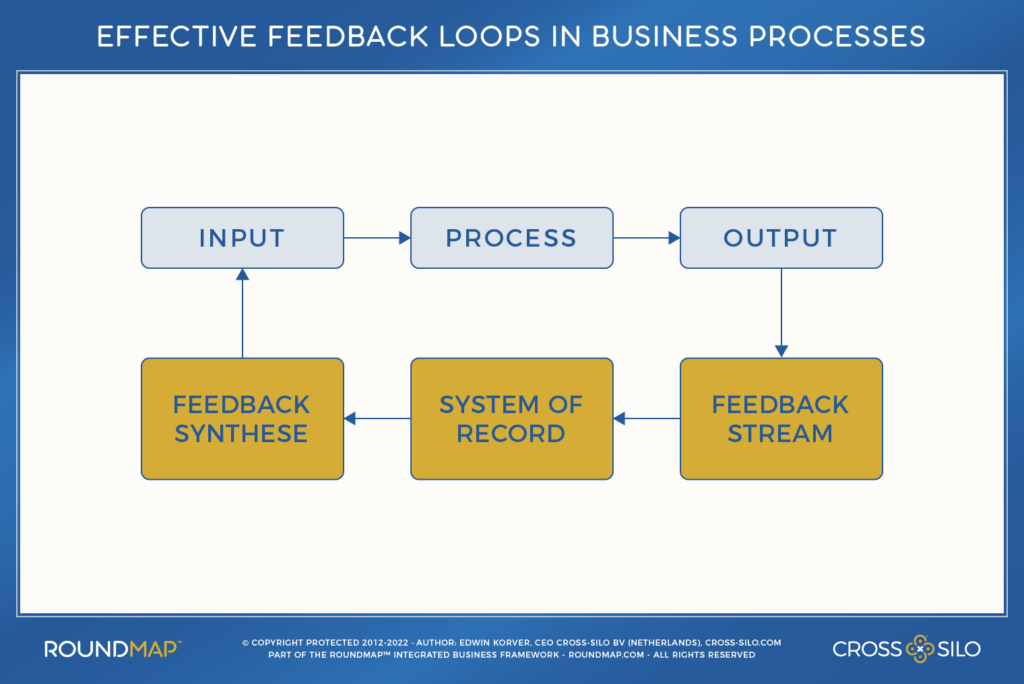
Final Words
Transitioning a workforce from a linear fixed mindset to a cyclical growth mindset is challenging. But we are at a tipping point for large-scale social innovation. We’re leaving behind an era of low-value industrial automation and shifting to an age of unprecedented value creation that demands highly creative, innovative, and collaborative individuals. Instead of competing on product and price, firms will be competing on positive impact.
People’s priorities have shifted after two years of Covid-19. The concerns over human health have already led to ‘The Great Resignation,’ which may be just the beginning. Many employees want to keep the benefits they experienced while working remotely, and employers who do not adapt might stand to lose the battle for talent. These changes will ripple through your company’s workforce, portfolio, and financial health.
Challenges arise if leaders continue thinking that ‘this does not concern us’. The path forward is to embrace change and adapt to the shifting realities of a rapidly evolving economy, creating new opportunities for growth, innovation, and collaboration. The time for action is now, lest we leave ourselves behind in the race for growth and prosperity.
Author
-
Edwin Korver is a polymath celebrated for his mastery of systems thinking and integral philosophy, particularly in intricate business transformations. His company, CROSS-SILO, embodies his unwavering belief in the interdependence of stakeholders and the pivotal role of value creation in fostering growth, complemented by the power of storytelling to convey that value. Edwin pioneered the RoundMap®, an all-encompassing business framework. He envisions a future where business harmonizes profit with compassion, common sense, and EQuitability, a vision he explores further in his forthcoming book, "Leading from the Whole."

